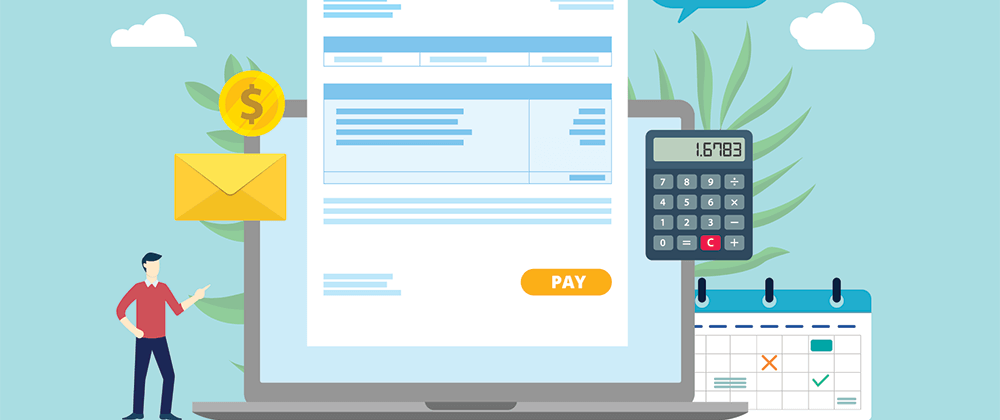Invoicing is an integral part of financial management for all types of companies. Traditional invoicing methods have been in use for decades, but recent technological breakthroughs have permitted considerable improvements in invoicing efficiency, accuracy, and security. Businesses now have a variety of alternatives for invoicing, ranging from digital invoicing and automation to cloud-based invoicing and blockchain technologies. In this article, we will look at the evolution of invoicing as well as the most recent trends and advances in this essential area of financial administration.
The conventional invoicing procedures and its difficulties
Manual invoicing:
The disadvantages of paper-based invoicing
Manual invoices have been the standard invoicing method for many years, but it has its own set of issues. Paper-based invoicing takes time and can be a tiresome procedure. It can also lead to mistakes, which can create payment delays and irritation for both parties. Furthermore, manual invoicing might be costly due to the costs of printing, postage, and storage.
*Payment tracking: *
The difficulties of managing many invoices and tracking payments
Another difficulty with traditional billing is maintaining several invoices and tracking payments. It can be difficult for small businesses to maintain track of their bills, which can result in late payments or even missing invoices. This can have an impact on cash flow and make financial management more difficult.
*Errors and delays: *
The Impact of common billing mistakes on financial management
Invoicing errors, such as duplicate invoices, inaccurate billing amounts, or missing information, are also possible with manual invoicing. These mistakes might cause payment delays and have a severe impact on a company's financial management. Furthermore, fixing these inaccuracies can be time-consuming and costly, adding to the difficulties of manual invoicing.
Invoicing technology advancements: digital invoicing and automation.
Electronic invoicing: How it has changed the invoicing process
Electronic invoicing, often known as e-invoicing, has transformed the invoicing process. E-invoicing is the process of creating invoices electronically and sending them to buyers via a digital platform. Paper, shipping, and manual processing are all eliminated with e-invoicing. It also decreases the possibility of errors and makes tracking and managing invoices easier.
The advantages of automated invoices:
Another innovation in the invoicing process is automation. By eliminating manual data entry, invoice automation streamlines the billing and payment process. This assists organizations in saving time, reducing errors, and increasing efficiency. In addition, automated invoicing provides firms with a record of all invoices and payments, which can aid in financial management and reporting.
APIs and their Functions:
How APIs are used to automate invoicing and payment procedures
APIs are used to integrate invoicing and payment procedures into other company software. Businesses can save time and avoid errors by integrating invoicing and payment processing with other company tools. APIs aid in the automation of invoicing by linking various systems and sharing data amongst software.
The advantages and rates of cloud-based invoicing model
Cloud invoicing:
The benefits of cloud invoicing versus traditional software
Invoicing via the cloud has numerous advantages over traditional invoicing software. Cloud-based invoicing allows businesses to access their invoicing systems from any location at any time. It also removes the need for costly software and infrastructure. Cloud-based invoicing provides a safe and scalable invoicing platform for enterprises.
*Adoption rates: *
The expansion of cloud-based invoicing and its future prospects
The global cloud-based invoicing market is predicted to increase from $2.13 billion in 2020 to $5.90 billion by 2025, according to Markets and Markets. This increase can be attributed to the multiple advantages of cloud-based invoicing, such as scalability, cost savings, and ease of use. As more organisations use cloud-based invoicing systems, the future looks bright.
The key features of modern cloud-based invoicing platforms
Many modern cloud-based invoicing services provide configurable invoice templates, automated payment reminders, and interaction with accounting software. These functions assist enterprises in saving time, reducing errors, and increasing efficiency. Modern cloud-based invoicing technologies also offer firms real-time financial data and reporting, allowing them to make smart business decisions.
The emergence of mobile invoicing: Convenience and user-friendliness
Mobile Invoicing: The Benefits of Using Apps for Mobile Invoicing
Mobile invoicing apps are gaining popularity among businesses of all sizes. Mobile invoicing software enables users to make and send invoices from their smartphones or tablets while on the go. This allows organizations to generate invoices from anywhere and at any time.
Payment options:
Invoice recipients will appreciate the simplicity of mobile payment options.
Users can also receive payments via the Online invoice app. This allows invoice receivers to pay invoices promptly and securely using their mobile devices. Electronic payments also allow firms to receive payments more quickly, which improves their cash flow.
Accounting software integration:
How mobile invoicing interfaces with accounting software for seamless financial management
Accounting software can be integrated with mobile invoicing apps. This integration gives organisations a unified financial management solution that allows them to generate invoices and track payments from their mobile device. In addition, the connectivity provides organisations with real-time financial data, making it easier to manage money and make sound business decisions.as well as enhanced precision
The advantages of integrating invoicing and accounting software for businesses
Process simplification: combining invoicing with accounting software can save time and decrease errors
The benefits of employing integrated software for financial reporting and analysis include increased accuracy.
convenience and accessibility
FAQ
What are the advantages of cloud-based invoicing?
Cloud-based invoicing has various advantages over traditional invoicing software, including increased flexibility, automated software updates, and reduced upfront expenses. Furthermore, cloud-based invoicing enables for data access from anywhere and easier connection with other apps.
How can artificial intelligence-powered invoicing help with financial management?
AI-powered invoicing can help financial management in a variety of ways, including automating data entry and decreasing errors, automating payment reminders, and shortening invoice processing time. AI-powered invoicing also allows firms to better monitor and analyse financial data, which can lead to better decision-making.
What exactly is blockchain invoicing and how can it help with financial management?
Blockchain invoicing is a technology that tracks financial transactions such as invoicing and payments using blockchain, a decentralized, secure, and transparent ledger. Blockchain invoicing has the potential to improve financial management by increasing security and fraud prevention, increasing transparency, and decreasing the need for intermediaries.
How can firms ensure that their invoices are correct and timely?
Businesses should use automated invoicing software, keep up-to-date client account information, track invoice and payment due dates, and follow up on late payments to ensure accurate and timely invoicing. Businesses should also establish clear billing standards and procedures, as well as providing regular training for invoicing workers.









Top comments (0)